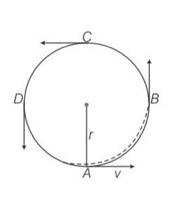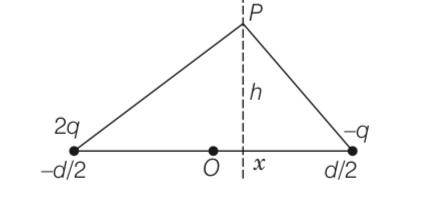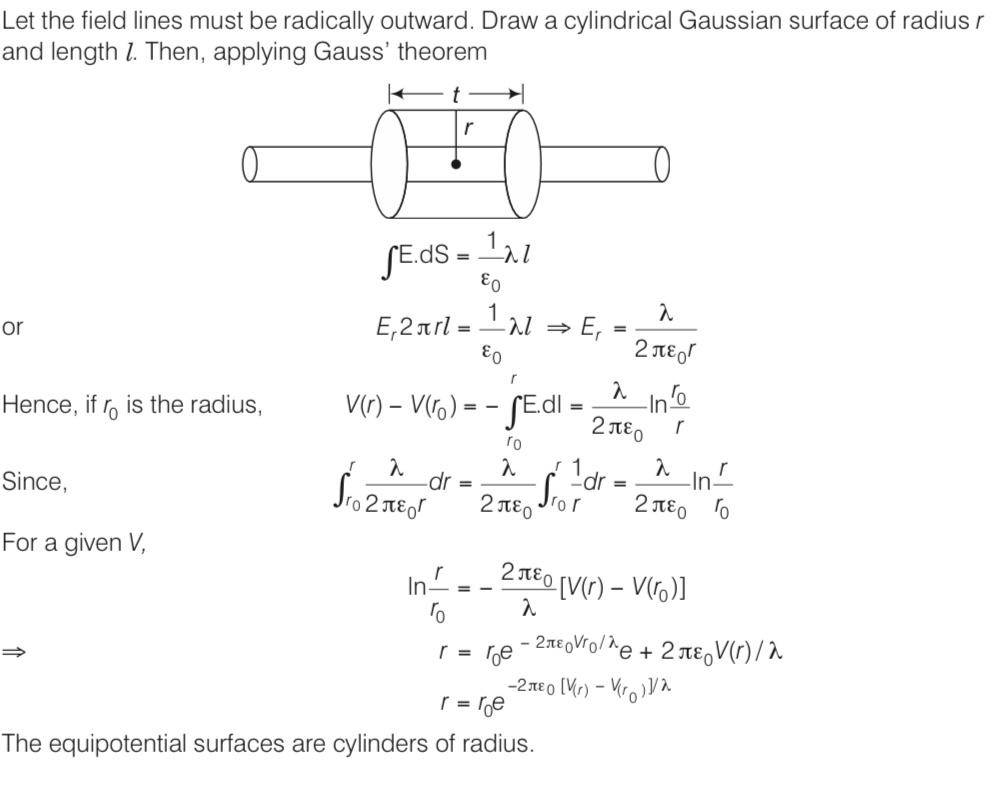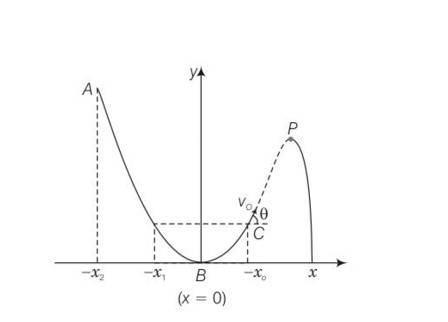Physics Ncert Solutions Class 12th
Get insights from 1.2k questions on Physics Ncert Solutions Class 12th, answered by students, alumni, and experts. You may also ask and answer any question you like about Physics Ncert Solutions Class 12th
Follow Ask QuestionQuestions
Discussions
Active Users
Followers
New answer posted
4 months agoContributor-Level 10
This is a Multiple Choice Questions as classified in NCERT Exemplar
Explanation- |A+B|=|A-B|
=
4|A|B|cos =0
|A|2+|B|2cos =0
A=0 or B=0 so . so A perpendicular B
New answer posted
4 months agoContributor-Level 10
This is a Multiple Choice Questions as classified in NCERT Exemplar
Answer- a, b, c
Explanation- (i) Speed will constant throughout
(ii) Velocity will be tangential in the direction of motion
(iii) Centripetal acceleration will be a= v2/r, will always be towards centre of the circular path.
(iv) Angular momentum is constant in magnitude and direction out of the plane perpendicularly as well.

New answer posted
4 months agoContributor-Level 10
This is a long answer type question as classified in NCERT Exemplar
To lift the disc ther must be some electrostatic force is reqired.
F=qE……. (1), E=V/d………. (2)
But the charge required during the process is - 0 r2, using this relation in 1 and 2
F=- 0 r2V/d…… (3)
Also to balance something F=mg……. (4)
From equation 3 and 4
Mg= - 0 r2V/d, so V = 2 this the requird solution.
New answer posted
4 months agoContributor-Level 10
This is a Multiple Choice Questions as classified in NCERT Exemplar
Answer- a, c
Explanation – as we know average acceleration is aav=
But when acceleration is not uniform Vav is not equal to v1+v2/2
So we can write
= v2-v1 (t2-t1)
New answer posted
4 months agoContributor-Level 10
This is a Multiple Choice Questions as classified in NCERT Exemplar
Answer- c
Explanation– as the given track y=x2 is a frictionless track thus total energy will be same throughout the journey.
Hence total energy at A = total energy at P . at B the particle is having only Ke but at P some KE is converted to P
Hence (KE)B = (KE)P
Total energy at A = PE= total energy at B = KE= total energy at P
= PE+KE
Potential energy at A is converted to KE and PE at P hence
(PE)P< (PE)A
Hence (height)P= (height)A
As height of p < height of A
Hence path length AB > path length BP
New answer posted
4 months agoContributor-Level 10
This is a long answer type question as classified in NCERT Exemplar
To lift the disc ther must be some electrostatic force is reqired.
F=qE……. (1), E=V/d………. (2)
But the charge required during the process is - 0 r2, using this relation in 1 and 2
F=- 0 r2V/d…… (3)
Also to balance something F=mg……. (4)
From equation 3 and 4
Mg= - 0 r2V/d, so V = 2 this the requird solution.
New answer posted
4 months agoContributor-Level 10
This is a Multiple Choice Questions as classified in NCERT Exemplar
Answer- a,b,c
Explanation – H=
H1=Vo2sin2 1/2g , H2=Vo2sin2 2/2g
H1>H2
Vo2sin2 1/2g= Vo2sin2 2/2g
Sin2 1>sin2 2
Sin2 1 – sin2 2>0
(Sin 1 – sin 2)( Sin 1 + sin 2)>0
Sin 1>sin 2 or 1 >2
T=
T1= , T2=
T1> T2
R=
Sin 1>sin 2
Sin2 1> sin2 2
R1>R2
Total energy for the first particle
U1=K.E+P.E=1/2m1
U2= K.E+P.E= 1/2m2
Total energy for the second particle
So m1= m2 then U1=U2
So m1>m2 then U1>U2
So m1
New answer posted
4 months agoContributor-Level 10
This is a long answer type question as classified in NCERT Exemplar
-
If net potential is zero then,
=

2dx= 0 , x=0
X=0 , y-z plane.
New answer posted
4 months agoContributor-Level 10
This is a long answer type question as classified in NCERT Exemplar

New answer posted
4 months agoContributor-Level 10
This is a Multiple Choice Questions as classified in NCERT Exemplar
Answer- a, b
Explanation - |A+B|= |A|or |A+B|2=|A|2
|A|2 +|B|2+2|A|B|cos = |A|2
|B| (|B|+2|A|cos )= 0
|B|=0 or |B|+2|A|cos =0
Cos =
If A and B are antiparallel then =180
-1=
Taking an Exam? Selecting a College?
Get authentic answers from experts, students and alumni that you won't find anywhere else
Sign Up on ShikshaOn Shiksha, get access to
- 65k Colleges
- 1.2k Exams
- 686k Reviews
- 1800k Answers

